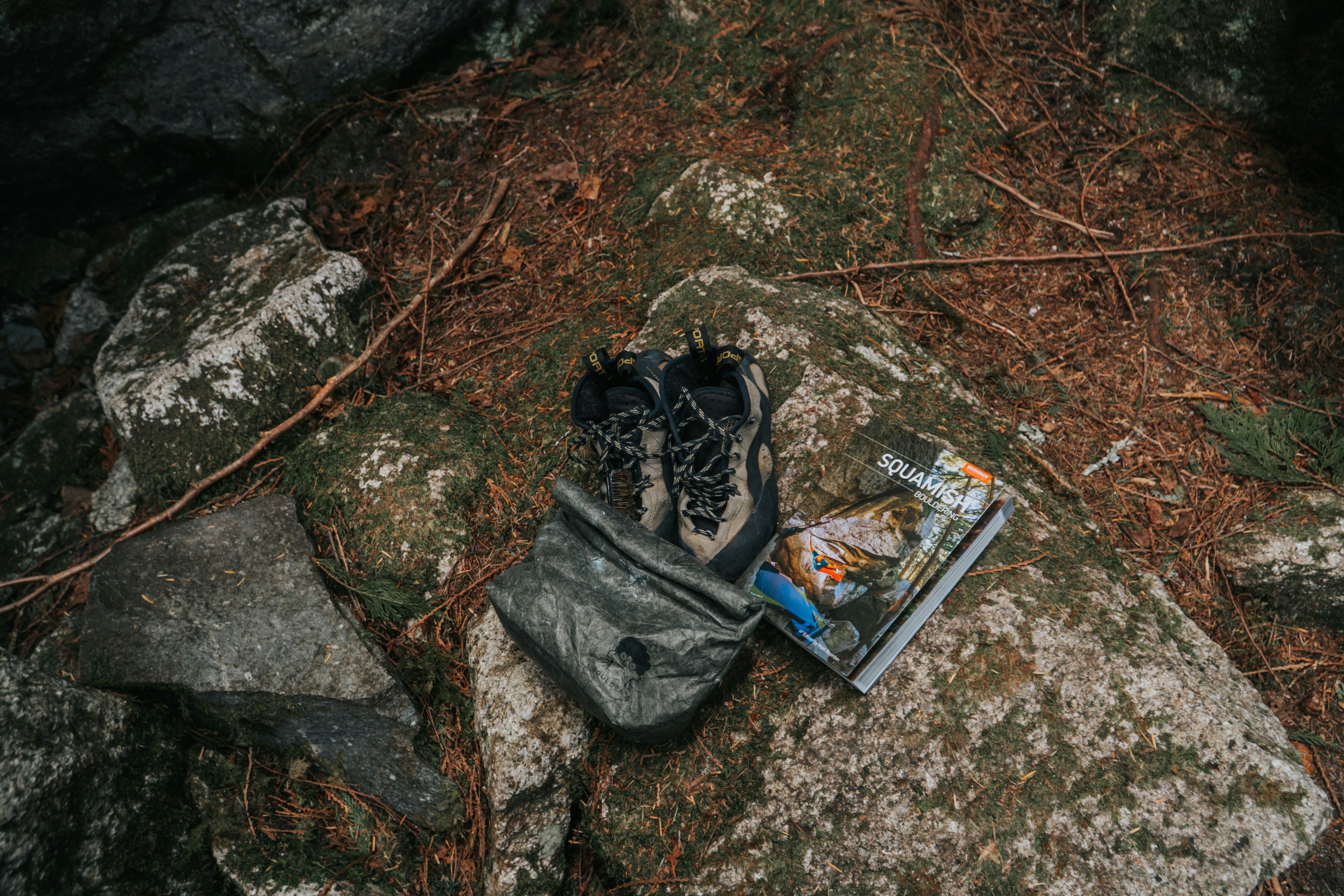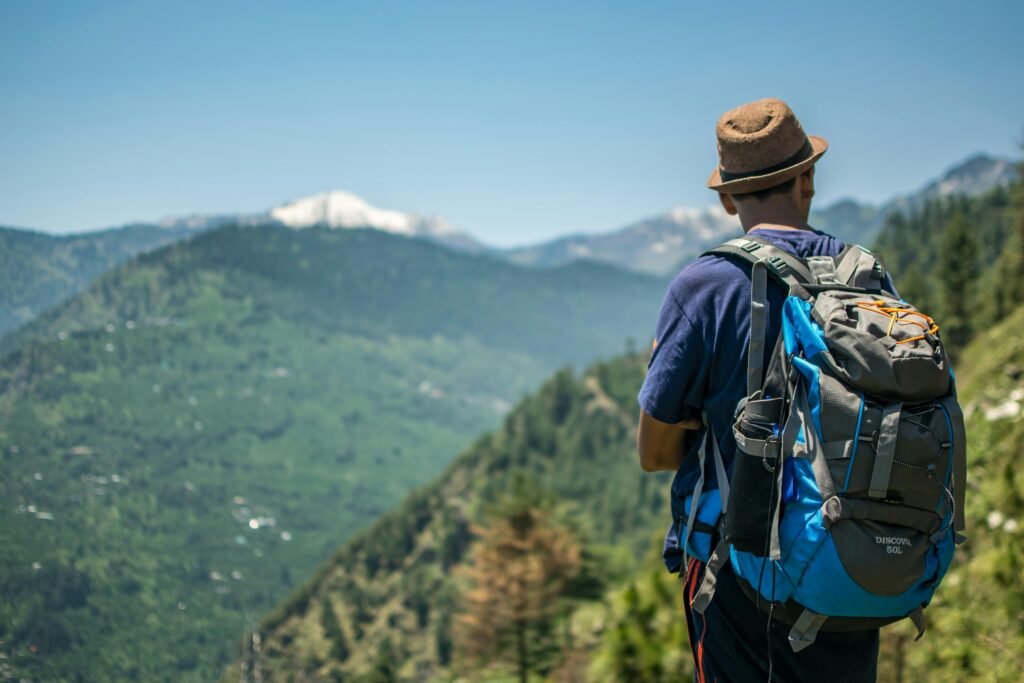Best Base Towns for Hiking
When planning a hiking adventure in the Alps, selecting the right base town can significantly enhance the experience. Two notable towns that stand out are Innsbruck in Austria and Zermatt in Switzerland. Both towns offer unique amenities, accessibility options, and local culture, catering to a wide range of hiking enthusiasts.

Innsbruck serves as a vibrant hub nestled within a stunning alpine landscape. It is easily accessible via train and air, making it convenient for hikers arriving from various locations. The town boasts an array of accommodations, from budget-friendly hostels to luxurious hotels, catering to diverse preferences. Beyond hiking, Innsbruck’s rich history, highlighted by its beautiful architecture and local markets, provides a charming atmosphere for visitors. Hikers can enjoy direct access to numerous trails, with options ranging from leisurely walks to challenging climbs, such as the nearby Nordkette range.
On the Swiss side, Zermatt is renowned for its breathtaking views of the iconic Matterhorn. This car-free town exudes a distinct alpine charm, with a vibrant array of restaurants, boutiques, and local attractions that enhance the hiking experience. Accessible via train, Zermatt presents a wide range of hiking trails suitable for all skill levels. Trails leading to nearby scenic wonders such as the Gornergrat and Sunnegga provide unparalleled views and immersion in the surrounding nature. The well-maintained infrastructure of Zermatt ensures a seamless experience for visitors, while the local culture adds an enriching layer to the hiking journey.
Other towns worth considering include Chamonix in France and Lauterbrunnen in Switzerland, each offering their own unique blend of amenities and access to hiking routes. Chamonix is famed for its adventurous spirit and proximity to Mont Blanc, while Lauterbrunnen captivates with its stunning waterfalls and valley views. Each base town provides a unique atmosphere and set of amenities, catering to various hiking preferences and enhancing the overall adventure in the majestic Alps.
Day Hikes vs. Multi-Day Hikes
When considering hiking in the picturesque Alps, one must choose between day hikes and multi-day hikes, each offering a unique experience. Day hikes are typically shorter excursions, allowing participants to enjoy scenic views and return to their starting point within a single day. These hikes are ideal for individuals who may have limited time or prefer not to carry the additional gear required for overnight excursions. Popular trails for day hikes in the Alps include the picturesque Lake Oeschinen in Switzerland, renowned for its emerald waters and stunning surroundings, and the breathtaking Aletsch Glacier hike, providing awe-inspiring glacial vistas.

In contrast, multi-day hikes encompass extended trekking experiences, often integrating overnight stays in mountain huts or camps. These hikes allow for a more immersive encounter with the diverse landscapes and cultures of the region, as hikers traverse varied terrains over a greater distance. Multi-day hikes cater to individuals seeking adventure and are often suited for those with moderate to advanced experience levels. Notable routes for multi-day hiking in the Alps include the Haute Route, which connects Chamonix and Zermatt, and the Stubai High Trail, celebrated for its dramatic alpine scenery.
When selecting between these two options, it is essential to consider personal goals, time availability, and experience level. For beginners or those with constraints on time, day hikes are an excellent choice, while advanced hikers looking for a more challenging and rewarding experience may find multi-day hikes to be a perfect fit. Ultimately, both types of hikes offer an opportunity to explore the compelling beauty of the Alps, catering to various preferences and aspirations.
Essential Gear Checklist for Hikers
When preparing for an unforgettable hiking experience in the picturesque Alps, having the right gear is paramount. Whether one is planning a leisurely day hike or an extended trekking adventure, ensuring that one is equipped with the essential items can greatly enhance safety and enjoyment. Here is a comprehensive gear checklist to guide hikers in their preparations.
First and foremost, suitable clothing is essential. Begin with moisture-wicking base layers to keep sweat away from the skin. Consider packing insulating layers, such as fleece jackets, to provide warmth in the cooler alpine temperatures. A waterproof and breathable outer layer, like a rain jacket, is crucial to protect against rain and wind. It is advisable to dress in layers, allowing for adjustments as weather conditions can change rapidly in the mountains.
Footwear is another key component of the hiking gear checklist. Sturdy hiking boots or shoes, designed for rough terrain, are recommended. Ensure they provide adequate ankle support and have a good grip for navigating rocky paths. It is advisable to wear moisture-wicking socks to prevent blisters. Hikers should also consider packing lightweight sandals or camp shoes for relaxing at the end of the day.
In addition to clothing and footwear, essential tools and accessories should not be overlooked. A reliable hiking backpack is necessary to carry all supplies comfortably. Hydration systems, such as water bottles or hydration packs, are crucial to staying hydrated throughout the hike. Navigation tools, including maps and compasses, or GPS devices, aid in maintaining a sense of direction. Moreover, a first-aid kit and multi-tool can be invaluable for handling minor accidents or emergencies.
Lastly, consider packing other useful items like trekking poles, sun protection, and snacks. Trekking poles can enhance stability on challenging trails, while sunscreen and sunglasses protect against UV rays. Energy-dense snacks serve as a quick source of sustenance during breaks. By meticulously preparing with the right gear, hikers can embark on their alpine adventure with confidence and peace of mind.
How to Use Mountain Huts
Mountain huts are a distinctive feature of the Alps, providing hikers with cozy accommodations amid stunning landscapes. These rustic lodges offer not only shelter but also the chance to experience the local culture and hospitality. Finding and booking a mountain hut can enhance your hiking experience, so it is essential to familiarize yourself with the process and expectations.
To locate suitable mountain huts along your hiking route, numerous online resources and apps dedicated to Alpine hiking are available. Websites such as Alpenverein or local tourism boards provide information on various huts, including their locations, availability, and amenities. Many huts are listed on booking platforms, enabling easy reservation. It is advisable to plan ahead, as popular huts can fill quickly, especially during peak hiking seasons.
When it comes to facilities, mountain huts vary in offerings. Some may have private rooms, while others predominantly feature dormitory-style accommodations. Most provide bedding, but it is prudent to bring a sleeping bag liner. Additionally, many huts serve meals, typically focusing on regional cuisine, providing a fantastic opportunity to indulge in local flavors after a long trek. Consider consulting the hut’s website or contacting them directly to inquire about meal options and dietary restrictions.
Etiquette and communication play an important role in ensuring a pleasant stay at mountain huts. Always greet the staff upon entry and be mindful of their guidelines for check-in and check-out. Remember that these spaces can be communal; therefore, maintaining cleanliness and respecting shared areas is crucial. If you’re conversing with fellow hikers in a multilingual environment, a few basic phrases in the local language can foster goodwill and connection.
In conclusion, staying at mountain huts is an integral part of the Alpine hiking experience. By understanding how to find, book, and navigate these accommodations, you can fully appreciate the unique atmosphere they provide during your adventures in the Alps.
Maps and Safety Tips for Hiking in the Alps
Hiking in the Alps can be a rewarding adventure, but competent navigation and safety precautions are paramount to ensuring a successful journey. Utilizing maps and GPS systems effectively will help you stay oriented throughout your hike. It is essential to invest in detailed topographic maps, which provide crucial information on elevation changes, terrain features, and trail networks. Many hiking trails are well-marked, yet having a paper map and a GPS device as a backup can be life-saving in regions with poor signal or overwhelming terrain.
When using GPS, consider downloading offline maps to navigate without internet access. Many smartphone applications tailored for hiking allow users to track their location, routes, and even waypoints of interest. However, it’s wise to familiarize yourself with the limitations of such devices, as they can occasionally misinterpret your position, especially in valleys surrounded by high peaks. Therefore, understanding how to cross-reference your GPS readings with your topographic map is an essential skill.

One vital aspect of safety while hiking in the Alps is identifying trail markers. Markings may vary by region, but generally, they consist of color-coded signs or painted blazes on trees and rocks. Be attentive to these cues to avoid wandering off course. If you find yourself in a situation where you are lost, stay calm, and retrace your steps to the last known marker, if possible. Giving yourself ample daylight for your hike and returning well before sunset is critical, as navigating unfamiliar terrain in the dark poses significant risks.
In case of emergencies, always carry a basic first aid kit and know how to use its contents. Trustworthy hiking companions enhance safety; don’t hesitate to plan your route with a group. Inform someone of your itinerary before you commence your hike, ensuring they know when to expect you back. Following these safety tips will ensure a fulfilling and secure hiking experience in the breathtaking landscapes of the Alps.
Photography Tips for Capturing the Alps
Capturing the breathtaking beauty of the Alps can be a rewarding experience, particularly for hikers who want to document their alpine adventures. To enhance the quality of your landscape photography, understanding light, composition, and equipment is crucial. The best light for photographs typically occurs during the golden hours, shortly after sunrise and before sunset, when the soft, warm tones add depth to your images. This time of day often bathes the mountains in a magical glow, highlighting the rugged textures and natural colors of the terrain.
When composing your shots, consider the rule of thirds: divide your frame into nine equal sections, placing points of interest along these lines or their intersections. This technique can help create balanced and engaging photography. Additionally, leading lines—such as trails or rivers—can draw the viewer’s eye through the image, guiding them to the focal points. Incorporating foreground elements, like flowers or rocks, can add depth and context to your landscapes. It is essential to find unique viewpoints and experiment with angles to express the enchanting scenery from different perspectives.
Proper equipment also plays a significant role in achieving high-quality photographs. A DSLR or mirrorless camera with interchangeable lenses provides flexibility, while a sturdy tripod can stabilize your shots during long exposures. Wide-angle lenses are particularly effective for capturing expansive landscapes, whereas a telephoto lens is useful for photographing distant mountains or wildlife. Always take the weather into account as well; overcast skies can provide even lighting, while storms can create dramatic moments. Lastly, respecting the environment while photographing wildlife or local culture is paramount. Always follow ethical practices to ensure the preservation of the delicate ecosystems you’re documenting.
Alpine Weather Considerations
The weather in the Alps is characterized by its variability and can greatly influence hiking experiences. Understanding these unique conditions is crucial for both novice and experienced hikers aiming to explore this stunning region. Seasonal variations can significantly affect temperatures, precipitation, and humidity levels, making it essential for hikers to stay informed and prepared.
During the summer months, temperatures can range quite dramatically depending on altitude, with lower elevations experiencing warm, sunny days while higher elevations remain cooler. Sudden weather changes are common in the Alps, especially in the afternoon, when thunderstorms may emerge unexpectedly. It is essential to check local forecasts daily and be aware of any weather warnings that may arise as the day progresses. Hiking during early hours generally provides a greater chance of encountering stable conditions.
In the spring and autumn, hikers can expect a mix of warm and cold spells, along with increased chances of rain or snow, particularly at higher altitudes. These transitional seasons often present a unique challenge due to the unpredictability of weather patterns. As such, layering clothing becomes crucial, ensuring that hikers are equipped to handle both warm and chilly moments throughout their journey.
Winter hiking in the Alps offers its own set of considerations. Snow and ice can make trails challenging to navigate, and preparation often requires knowledge of winter gear, such as crampons and ice axes. It is also advisable to hike with a knowledgeable guide during these months to ensure safety in potentially treacherous conditions.
To ensure a safe and enjoyable hiking experience in the Alps, hikers should pack essentials such as waterproof clothing, a reliable weather app or device, and first-aid supplies. By being informed and adequately prepared, adventurers can fully appreciate the breathtaking trails that traverse this mountainous landscape, regardless of what weather awaits them.
Wildlife Encounters in the Alps
The Alps are not only known for their stunning landscapes and challenging trails but also for their rich biodiversity. As hikers traverse the various scenic routes, they have the opportunity to observe a myriad of wildlife that inhabits these majestic mountains. From the iconic chamois and ibex to the elusive golden eagle, the animal kingdom in the Alps is diverse and fascinating.

One of the most rewarding aspects of hiking in the Alps is the chance to encounter various species in their natural habitats. Early risers might spot deer grazing during the early hours, as they are most active at dawn and dusk. The alpine marmot is another notable creature, often seen sunbathing on rocky outcrops during summer months. These social rodents inhabit burrows and can frequently be heard chirping and whistling, serving as both a highlight for hikers and an indicator of a healthy ecosystem.
Bird enthusiasts may find joy in observing high-flying raptors like the golden eagle or the bearded vulture, which can soar gracefully above the trail. Additionally, the presence of various smaller birds, including finches and accentors, adds to the auditory landscape of the Alpine regions. As hikers traverse these routes, they must remember that wildlife encounters can vary significantly depending on the season and elevation.
However, it is crucial for hikers to respect these wild animals and their habitats. Maintaining a safe distance is essential to avoid stressing or disturbing the creatures. Feeding wildlife, although tempting for some, can lead to negative outcomes for both animals and humans. By understanding the importance of preserving these natural environments, hikers contribute to the ongoing conservation efforts required to protect these unique habitats and ensure future generations can enjoy similar wildlife encounters in the Alps.
Sustainable Hiking Practices in the Alps
The magnificent landscapes of the Alps attract countless hikers each year. To ensure that these stunning environments remain pristine for future generations, it is essential to adopt sustainable hiking practices. By following a set of guiding principles, hikers can enjoy the breathtaking beauty of the Alps while minimizing their ecological footprint.
One of the key frameworks for promoting sustainability in outdoor activities is the Leave No Trace principles. These guidelines serve as a foundation for responsible outdoor ethics and encompass various practices. Firstly, hikers should plan ahead and prepare adequately for their adventures. This includes understanding the terrain, checking weather conditions, and knowing the regulations of the areas they will explore.
During the hike, it is crucial to stick to established trails. Venturing off-path can lead to soil erosion, damage to delicate vegetation, and disruption of local wildlife habitats. Additionally, hikers should be encouraged to pack out everything they bring in, right down to food scraps and litter, ensuring that the natural surroundings are left unaffected.
Another significant aspect of sustainable hiking is respecting wildlife. Observing animals from a distance and avoiding feeding them helps maintain their natural behavior and habitat. It is also recommended to educate oneself about the local flora and fauna, fostering a greater appreciation and understanding of the Alpine ecosystem.
In addition to these practices, supporting local conservation efforts is vital. Many organizations work tirelessly to protect the Alpine environment, offering opportunities for hikers to contribute through donations or volunteer programs. By actively engaging in conservation efforts, outdoor enthusiasts can play a pivotal role in preserving the beauty of the Alps.
Incorporating these sustainable hiking practices not only enhances personal experiences but also helps protect the incredible Alpine landscapes. Embracing these guidelines ensures that future generations can enjoy the same striking views and diverse ecosystems that we cherish today.



